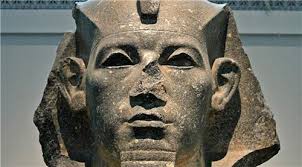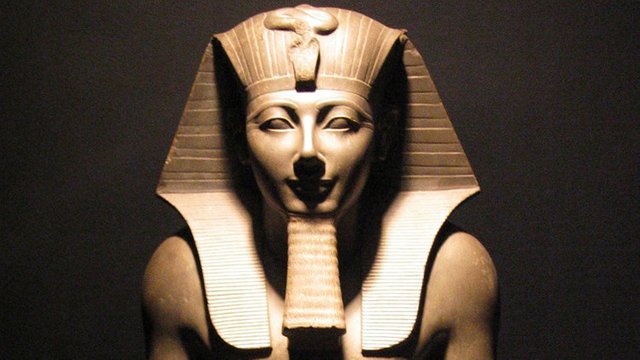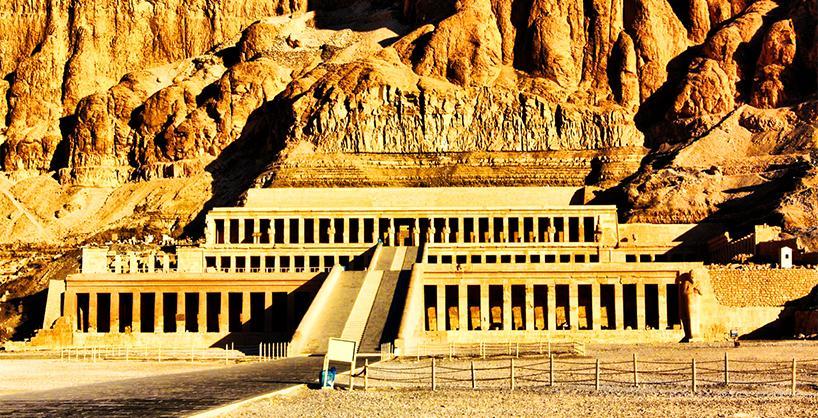Queen Hatshepsut : A woman from the Pharaohs era ruled Egypt
Queen Hatshepsut was the woman who ruled the longest reign in Egypt. She was the first woman to play Pharaoh, and Hatshepsut ruled Egypt for 20 years in the fifteenth century and was undoubtedly Egypt's most successful Pharaoh. Hatshepsut was one of the 18th Pharaohs of Egypt. Old .

Queen Hatshepsut was born around 1508 BC. As we mentioned earlier, Queen Hatshepsut ruled Egypt for more than 20 years. She served as Queen next to her husband, Tuthmosis II. After his death, he succeeded in the role of Pharaoh Egypt successfully. She was the guardian of her husband's son Tuthmosis the Third, who was the king of peace, and Hatshepsut built temples and monuments, which led to the prosperity of Egypt at the time, and after her death, the son of her husband Tuthmosis III wiped all the inscriptions that belong to and tried to eliminate the memory completely.
 Tuthmosis II
Tuthmosis II
 Tuthmosis III
Tuthmosis III
Hatshepsut
was the only child born to the Egyptian king Tuthmosis I of his main wife and Queen of Sharia. It was expected that Queen Hatshepsut was the queen. After her father's death at the age of 12, she married her brother Tuthmosis II, The throne was the right of Hatshepsut, but she married him as a common practice at this time aimed at ensuring the purity of the dynasty. During the reign of King Tuthmosis II, Hatshepsut was supposed to play the traditional role of the queen and the main wife
Tuthmosis the second died after 15 years of his rule, making Hatshepsut a widow before the age of 30. Queen Hatshepsut then had a daughter, her name Nefro Ra, and she had an heir to the baby of another non-main wife, and this baby was Thutmose III, who was young And Hatshepsut was the guardian and took over the duties of the Viceroy at the beginning for three years for unclear reasons. She began to claim the Pharaoh's role, but technically Hatshepsut raped the crown of the little king. Although Thutmose III was the official king At the time, Hatshepsut was the de facto ruler of power.
Hatshepsut began photographing herself in the form of a traditional king with the crown of the king, along with a fake beard and male body, and this was not an attempt to deceive people into thinking of a male; instead, she wanted to portray a woman with this situation, Its authority
Hatshepsut was successful from Queen to Pharaoh, and her supporters helped her to strengthen her position. They were part of her success in preserving the throne. Among these supporters was Thutmose I, who was one of her most important advisers and her mentor. In fact, This was one of the most important staff of the Queen and take rise with her in power, and some say that he was her lover but there is no confirmed information about it.
Hatshepsut as a queen
The country under the rule of Queen Hatshepsut was very prosperous. Yes, Egypt flourished. Unlike other rulers of the same line, Hatshepsut was more interested in ensuring economic prosperity and building and repairing archaeological monuments throughout Egypt, including its famous Temple Hatshepsut Temple.
Hatshepsut was one of the holiest places in the Holy Land, and Hatshepsut dedicated it to the worship of the god Amun, and set up a pair of red granite obelisks in the temple of Amun in Karnak, one of which remains today. Hatshepsut was one of the rulers of Egypt, In the ninth year of its rule, and the ships at the time returned with gold and ivory and bitter trees, and then the commemoration of a scene on the walls of the temple to do so

Queen Hatshepsut died in early February 1458 BC. In recent years, scientists have speculated that the cause of her death was related to a paint that was used to alleviate the condition of the chronic genetic skin. Unfortunately, the treatment contained toxic components. Experiments on antiquities Located near her grave that there are traces of a carcinogen.
The scientists confirmed that Hatshepsut was suffering from a chronic skin disease and was improving on this paint but a short respite, but did not know that it had exposed itself to a great risk over the years. In the late Hatshepsut period, Thutmose III began to crack down on A male expresses Hatshepsut, has already destroyed and maimed its own monuments, wiped out many of its own inscriptions and built a wall around its own obelisks. Some believe that this was all the result of their long-standing grudge. Thutmose III was likely to have made a political effort Strict to confirm his position of succession and ensure that no one will challenge the rule of his son Amenhotep the second or cut off from the throne, and despite the success of Hatshepsut apparent from its rule, and buried in the Valley of the Kings, but the effects of her own was distorted after her death by Tuthmosis III.
Hey @sindbad, great post! I enjoyed your content. Keep up the good work! It's always nice to see good content here on Steemit! Cheers :)
thank you so much exxodus for this comment and for your interest i am so happy with your support